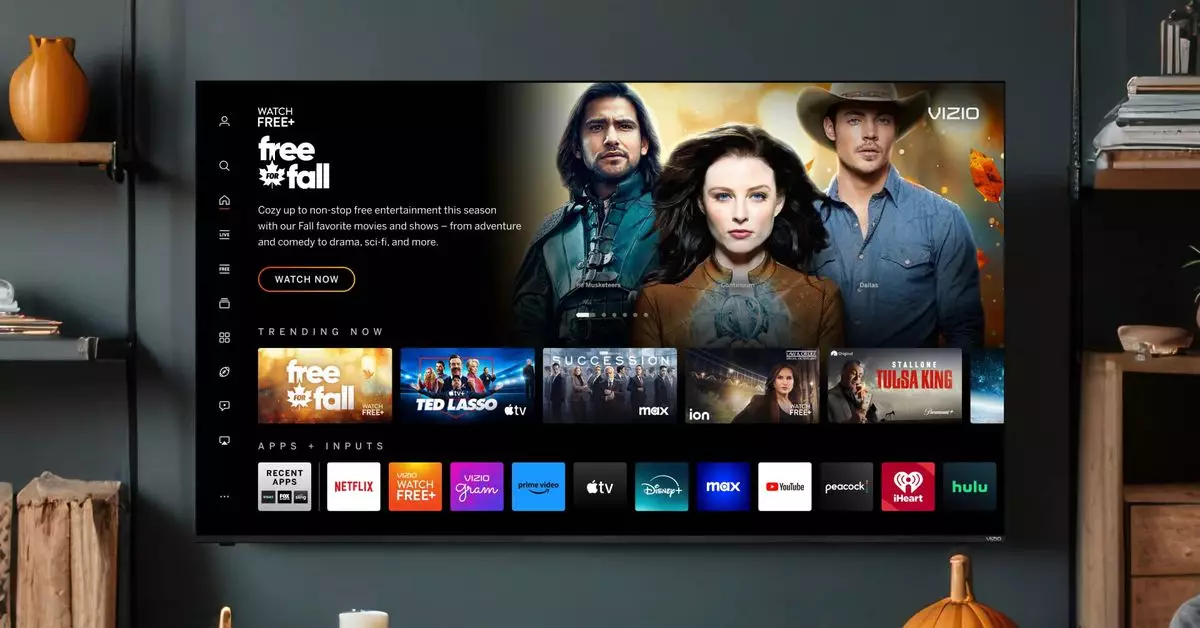Walmart, the retail behemoth known for its expansive reach in consumer goods, has made significant strides into the digital landscape with its recent acquisition of Vizio, an established television manufacturer, for a whopping $2.3 billion. This acquisition, originally announced in February, could be a game-changer not just for Walmart’s advertising revenue model but also for the entire consumer technology sector. Vizio’s success in the advertising domain through its Platform Plus division is particularly appealing to Walmart, as it seeks to diversify and enhance its own advertising capabilities.
One of the most compelling aspects of this acquisition lies in the trove of data that Vizio has amassed. The company’s emphasis on advertising and data analytics accounts for its gross profit, positioning it as a key asset in Walmart’s strategy to expand its advertising business. By integrating Vizio’s capabilities with its existing shopper data, Walmart can create highly targeted ads, leveraging insights from consumer behavior both in physical stores and online. This dual-pronged approach not only increases the efficiency of ad spends but also fosters a more personalized shopping experience for consumers.
With the acquisition finalized, Walmart is poised to tap into new advertising revenue streams, including potentially placing ads on Vizio TVs directly used in consumers’ homes. The shift towards integrating on-screen advertisements is both a logical and lucrative move, which could replicate strategies already employed by competitors like Roku, who have seen substantial revenue from ads and subscriptions. The competitive landscape of budget-friendly TV brands is tightening, and Walmart’s acquisition allows Vizio to stand firm against rivals while exploring innovative advertising strategies.
However, the acquisition raises significant concerns about privacy and how consumer data is handled. Vizio has faced backlash in the past for its controversial practices regarding viewer tracking without consent, leading to a hefty fine in 2017. As Walmart steps into this new arena, scrutiny from privacy advocates is likely to intensify. The merging of Walmart’s extensive shopping data with Vizio’s viewer information could create a powerful, albeit potentially intrusive, advertising machine. Transparency in data usage and robust privacy measures will be crucial to winning back consumer trust.
Despite the acquisition, Walmart has assured stakeholders that it plans to operate Vizio independently for the foreseeable future, retaining current leadership, including CEO William Wang. This will allow Vizio’s established operational model to remain intact while concurrently benefiting from Walmart’s resources and market reach. The decision signifies Walmart’s intention to respect Vizio’s brand identity and operational strengths, rather than imposing a rigid structure that could stifle innovation.
Walmart’s acquisition of Vizio represents a strategic maneuver to bolster its advertising business amid the growing competition in the tech landscape. While the potential for enhanced revenue and advertising innovation is apparent, the company must tread carefully to address privacy issues and maintain consumer trust. As the digital advertising landscape continues to evolve, Walmart’s next moves will be closely monitored by industry watchers and consumers alike.

